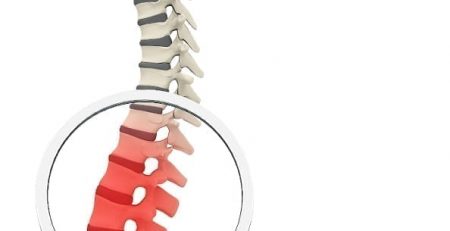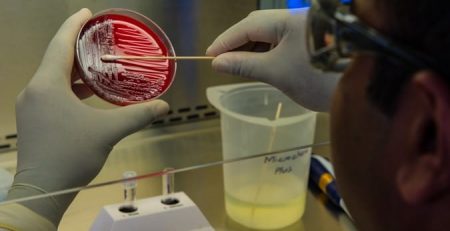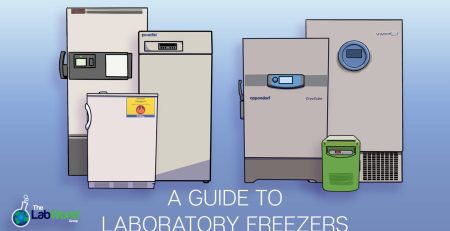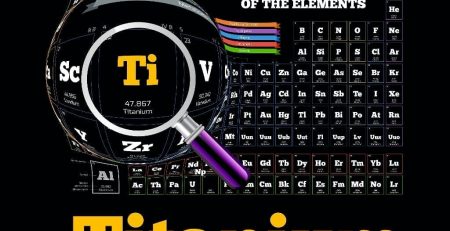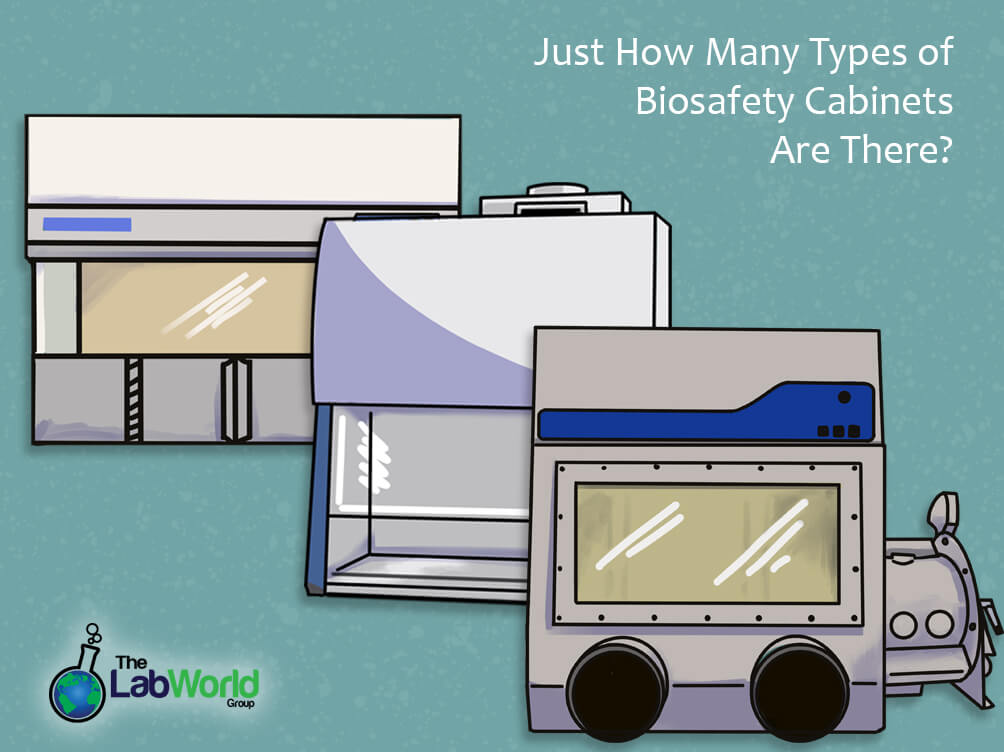
Just How Many Types of Biological Safety Cabinets Are there?
Amanda2022-01-20T15:53:31+00:00Biological Safety Cabinet Classes
Biosafety cabinets, as we touched on before are broken down by classes. There are three main categories tied to biocontainment levels each with steadily increasing degrees of containment and protection for the user, environment, and/or product. Here we’ll take an in-depth look at each, starting with Class I.
Class I Biological Safety Cabinets
The base level is Class I, offering the lowest level of protection using ventilated but uncirculated airflow. While these cabinets are built to protect the user and environment offer no protections for the product to prevent contamination as airflow is drawn in from the room unfiltered. These cabinets are similar to a fume hood but have the required HEPA filtration.
These BSC are best used to enclose equipment like a centrifuge or shaker, or protocols where cultures might generate an aerosol, whisking away the particles from the user and to the HEPA filter. Whether a Class I is ducted or not, the air is sterilized before reentering the environment. As a result, they should only be used with low to medium level risk biological agents, rated at a biosafety level of 1,2, or 3.
Class II Biosafety Cabinets
At the Class II level, we start to see protections not only for the user but for the product as well as expanding on the case used to include sterile pharmacy compounding. This class is further broken down into A1, A2, B1, B2, and C1 categories. A class II cabinet will have inward airflow to protect the user, downward filtered airflow to protect the sample, and HEPA filtered exhaust to protect the environment when exiting.
Biosafety Cabinet Types
An A1 cabinet has a minimum velocity of 75 fpm for the air that enters from the sash opening, they may or may not be ducted, and are only suited for working with biological agents that are free from volatile toxic chemicals, volatile radionuclides, but not for compounding hazardous pharmacy samples. Type A cabinets recirculate air back into the work area, using positive pressure to draw it through filters before flowing over the work area.
A type A2 like the A1 will filter HEPA air with or without ducting, however, they have a slightly higher inflow velocity of 100 FPM, and therefore trace quantities of hazardous chemicals can be permitted.
Type B also has two levels, B1 also requires an inflow of 100 FPM, and is similar in a lot of ways to the A2. A B1 Cabinet however has the added function of also being able to handle small traces of toxic chemicals and radionuclides as an addition to microbiology applications when work is done in the rear of the work area where the air is directly exhausted.
A B2 is sometimes referred to as a total exhaust cabinet, and as the name would imply does not recirculate any of the air in the system. Intake air is filtered before entering the work area in a downward flow and then is filtered and directly exhausted out. Because the air is used only once there is less chance of particulates coming through and can therefore be used with biological agents containing hazardous chemicals and radionuclides.
Type C1 is last in the line, requiring 105 fpm inflow through the sash but with the flexibility of being able to operate as either an A or B type cabinet. A true chameleon, Type C can be set up to either recirculate like type A or exhaust like a type B, simply by connecting or disconnecting the exhaust. When a change occurs, recertification will be necessary. This BSC also features marked work and storage areas and working with direct exhaust for hazardous vapors and radionuclides. While Type C is the most flexible, this flexibility is generally going to cost you more.
Class III Biosafety Cabinets
A Class III Biosafety Cabinet offers the most protection and is cleared for use with biosafety hazards requiring 1, 2, 3, or 4. These features completely enclosed work areas with a transfer chamber, leak-tight construction, and gloves for accessing the work area. Sometimes called glove boxes, these BSC use negative pressure within the cabinet and HEPA filtered air supply. When air is exhausted it either passes through double HEPA filtration or a HEPA filter and incineration.
Final Thoughts
As you can see which cabinet you’ll need is dictated entirely what biosafety level your work requires. Once that is known, selecting the best fit should be easier. Will you want ducting, recirculation, or does the flexibility of a Class II type C sound like a good fit for your lab? In our next article, we’ll discuss Biosafety Cabinet Manufacturers and what else you’ll need to consider when selecting a Biological Safety Cabinet for your lab.










